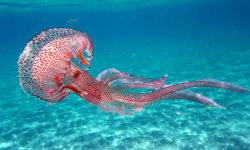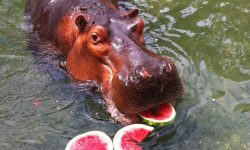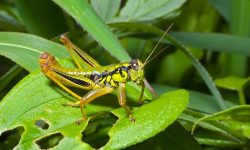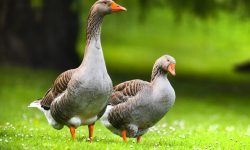Bears are some of the most powerful and versatile mammals on Earth. With their immense strength, sharp claws, and remarkable intelligence, they dominate forests, tundras, and mountains across North America, Europe, and Asia. But despite their reputation as fierce predators, bears are not purely carnivorous. In fact, they are omnivores — meaning their diet includes both plants and animals.
So, what do bears eat exactly? The answer depends on their species, habitat, and season. From berries and roots to fish and small mammals, bears have one of the most varied diets in the animal kingdom. Their ability to adapt their eating habits to different environments is what makes them such successful survivors.
In this guide, we’ll take a deep dive into the 20 foods bears love the most, exploring what fuels their strength, how they find their food, and what role their diet plays in keeping them wild, healthy, and strong.
Understanding What Bears Eat

Bears Are Omnivores — With a Twist
Most bear species eat both meat and plants, but the ratio varies. For example, polar bears are almost entirely carnivorous, surviving mostly on seals and marine animals. Pandas, on the other hand, are herbivores that rely almost exclusively on bamboo. Grizzly and black bears fall somewhere in between — they eat whatever the land provides.
This dietary flexibility makes bears incredibly resilient. It allows them to thrive in forests, tundras, and even urban edges.
Seasonal Eating Habits
Bears eat differently depending on the time of year. In spring, they feast on fresh vegetation after hibernation. Summer brings insects, fruits, and fish, while autumn is all about fattening up before the long winter sleep.
When food is scarce, bears can survive for months by slowing their metabolism, living off stored body fat. Their seasonal adaptability is key to survival in harsh climates.
20 Foods That Keep Bears Strong and Wild
1. Salmon
Salmon is one of the most iconic foods associated with bears, especially grizzlies and brown bears. During salmon spawning season, bears gather along rivers to catch fish jumping upstream.
Salmon is rich in protein, omega-3 fatty acids, and fat, which help bears gain the weight they need to survive winter hibernation. A single bear can consume over 20 fish a day during peak season.
Bears prefer fatty parts like the skin and brain — the most nutrient-dense portions — often leaving the rest for scavengers, contributing to ecosystem health.
2. Trout and Other Fish
When salmon isn’t available, bears feed on other freshwater fish like trout, char, or whitefish. These fish are packed with protein and easy to catch during shallow water migrations.
Black bears and brown bears often stand in rivers waiting patiently for fish to swim close enough for a lightning-fast strike. This feeding strategy provides consistent nourishment throughout summer.
Fish also provide hydration, making them an essential part of the diet in warmer months.
3. Berries
Berries are a bear’s favorite natural treat. Blueberries, huckleberries, raspberries, and blackberries are packed with natural sugars and antioxidants.
During late summer and early fall, bears spend hours foraging berry bushes, sometimes consuming tens of thousands of berries in a single day. These high-energy foods help them build fat reserves before hibernation.
Berries also improve digestion and keep bears hydrated — a sweet, healthy balance to their meaty diet.
4. Grass and Plants
Though they may seem like fierce hunters, bears actually spend much of their time grazing. In spring, they eat tender grass shoots, sedges, and clover to restore nutrients after hibernation.
These greens are rich in fiber, aiding digestion and flushing out toxins accumulated during their long winter rest. The fresh vegetation also provides essential vitamins like A, C, and K.
For young cubs learning to forage, grass is an easy, safe food to start with.
5. Roots and Tubers
Bears dig up roots, bulbs, and tubers such as wild onions and dandelion roots. These foods are energy-dense and available year-round.
Their powerful claws make them excellent diggers, allowing them to reach underground food sources easily. Roots provide starches, minerals, and moisture, which are especially valuable in dry habitats.
Some bears even use their keen sense of smell to locate edible roots buried deep beneath the soil.
6. Insects
Insects are a major protein source, especially for black bears and sloth bears. They eat ants, termites, beetles, and grubs by tearing open logs or anthills.
Insects provide essential fats, proteins, and trace minerals. They’re also abundant and easy to catch, especially for young or smaller bears.
Sloth bears in India are particularly known for their long, sticky tongues, which they use to slurp up termites like natural vacuum cleaners.
7. Ant Larvae and Pupae
Besides adult ants, bears often target larvae and pupae — the soft, protein-rich young inside ant colonies. These are easier to digest and high in fat.
Bears dig deep into ant mounds or fallen trees to extract these tiny meals. Their persistence pays off, as a single mound can provide thousands of larvae.
This food source is especially valuable in spring when other prey is scarce.
8. Carrion (Dead Animals)
Bears are opportunistic feeders, meaning they won’t pass up an easy meal. Carrion, or animal carcasses, offers a rich source of nutrients with minimal effort.
They often scavenge remains left by wolves or mountain lions, helping clean the environment and recycle nutrients.
A bear’s strong immune system allows it to safely consume decaying meat without getting sick — an impressive adaptation for survival.
9. Deer
Large bears such as grizzlies and polar bears occasionally hunt deer, elk, or moose. These big prey provide high-calorie meals that can last several days.
Bears are ambush predators when hunting large mammals. They rely on strength and surprise rather than speed. Once caught, they consume nearly every part of the carcass — meat, fat, and even bones.
These hunts are rare but crucial before hibernation, as they provide massive energy reserves.
10. Small Mammals
Smaller prey like rabbits, squirrels, and rodents make up a significant portion of a bear’s meat intake. They’re easier to catch and provide valuable protein.
Bears use their digging skills to uncover burrows or chase small animals hiding in vegetation. Black bears, in particular, are adept at hunting small mammals opportunistically while foraging.
This part of their diet ensures they meet protein needs without relying solely on large hunts.
11. Birds and Eggs
Bears frequently raid bird nests for eggs and chicks, especially ground-nesting species like ducks or geese. Eggs provide concentrated nutrients and fats.
They locate nests using their keen sense of smell, often scavenging in marshy areas or near lakes. For cubs, eggs are an easy-to-digest food that introduces them to animal protein early.
While eggs aren’t a primary diet item, they’re a valuable seasonal supplement.
12. Honey
Bears love honey — not just for its sweetness, but for the protein-packed larvae and wax found in beehives.
When bears raid hives, they’re after both honey and the bees themselves. The sugar provides quick energy, while the larvae add protein and fat.
Beekeepers in bear territory often protect hives with electric fences, since this natural craving can lead to frequent raids!
13. Fruits
In addition to berries, bears enjoy larger fruits like apples, pears, plums, and melons. Fruits are full of natural sugars that provide instant energy and hydration.
Wild bears often raid orchards in autumn when fruit trees are heavy with ripe produce. While this can cause conflicts with humans, it’s a natural part of their foraging behavior.
In the wild, fallen fruits also attract insects and small prey — offering bears multiple food sources in one spot.
14. Pine Nuts and Seeds
Bears eat pine nuts, acorns, and other tree seeds that fall to the forest floor. These are rich in oils, proteins, and healthy fats.
Grizzly bears are especially fond of pine nuts, which help them build fat reserves for hibernation. They’ll dig into pine cones or even climb trees to access them.
This diet component is seasonal but crucial in autumn for energy storage.
15. Bamboo
Although pandas are bears, their diet is unique. They eat almost nothing but bamboo — consuming up to 80 pounds per day!
Bamboo provides fiber, hydration, and trace nutrients. Pandas’ strong jaws and specialized teeth allow them to chew tough stalks all day long.
Despite its low nutritional value, bamboo’s abundance supports panda survival in China’s mountainous regions.
16. Seaweed
Polar bears and coastal brown bears sometimes consume seaweed washed ashore. It provides minerals, iodine, and salt that supplement their protein-heavy diets.
Seaweed also aids digestion and hydration. In marine environments, it’s one of the few available plant sources during lean months.
This occasional addition showcases bears’ ability to adapt even to ocean ecosystems.
17. Insect Larvae and Grubs
Bears dig through decaying wood and soil to find larvae — soft, fatty insect stages that provide essential energy.
Grubs are packed with fat, making them a powerful energy source before hibernation. Bears may spend hours tearing apart rotting logs to find just a few larvae-rich spots.
This behavior improves soil aeration and helps decompose dead trees, benefiting the forest ecosystem.
18. Amphibians
In wetter regions, bears sometimes eat frogs or salamanders. These small animals provide hydration and a modest source of protein.
During spring rains, amphibians emerge from ponds and are easy prey. Black bears and Asiatic bears take advantage of these seasonal feasts.
Although not a dietary staple, amphibians help round out the variety of a bear’s omnivorous diet.
19. Mushrooms and Fungi
Bears occasionally eat mushrooms, particularly during late summer and fall. Mushrooms are rich in fiber, vitamins, and trace minerals.
While not high in calories, fungi help improve digestion and balance gut health. Bears instinctively avoid toxic varieties, showing their keen natural intelligence.
Their mushroom-foraging habits even help spread fungal spores, aiding forest regeneration.
20. Human Food and Garbage
In areas where humans live nearby, bears may scavenge from garbage cans, campsites, or crop fields. Leftover food, livestock feed, and even pet food can attract them.
While human food is high in calories, it’s dangerous for bears because it encourages dependency and conflicts. Wildlife experts urge people to secure waste to keep bears truly wild.
Despite their curiosity, bears naturally prefer wild food — but won’t hesitate to take easy meals when available.
How Diet Influences Bear Health
Building Fat for Survival
Fat is essential for bears — it provides insulation, energy, and sustenance during hibernation. Their diverse diet ensures they can build sufficient fat reserves each year.
Supporting Ecosystem Balance
By consuming plants, insects, and animals, bears help control populations and spread seeds, maintaining biodiversity. Their feeding and scavenging behaviors contribute directly to ecosystem stability.
Frequently Asked Questions (FAQs)
Do all bears eat meat?
Not all. Polar bears are strictly carnivorous, pandas are herbivorous, and species like grizzly and black bears are omnivorous — eating both meat and plants.
What do bears eat during hibernation?
They don’t eat at all! Bears live off stored fat reserves accumulated during summer and fall. Their metabolism slows dramatically to conserve energy.
Do bears eat humans?
Bear attacks are rare and usually defensive. Bears prefer natural food sources and avoid humans whenever possible.
How much food do bears eat per day?
Depending on the season, a bear can consume up to 90 pounds of food per day during pre-hibernation feeding frenzies.
Do bears eat honey?
Yes! Bears love honey for its sweetness and the protein from bee larvae. They’ll raid hives whenever possible.
Conclusion
Bears are among nature’s most adaptable eaters. From salmon and berries to insects and roots, their diverse diet keeps them strong, energetic, and resilient across harsh environments.
Their eating habits not only sustain their own survival but also shape ecosystems — controlling pests, spreading seeds, and recycling nutrients. Understanding what bears eat helps us appreciate these magnificent animals beyond their strength and power.
Whether they’re fishing in Alaska, grazing in forests, or climbing trees for nuts, bears remind us of nature’s incredible balance — where every meal plays a part in keeping the wild alive.






